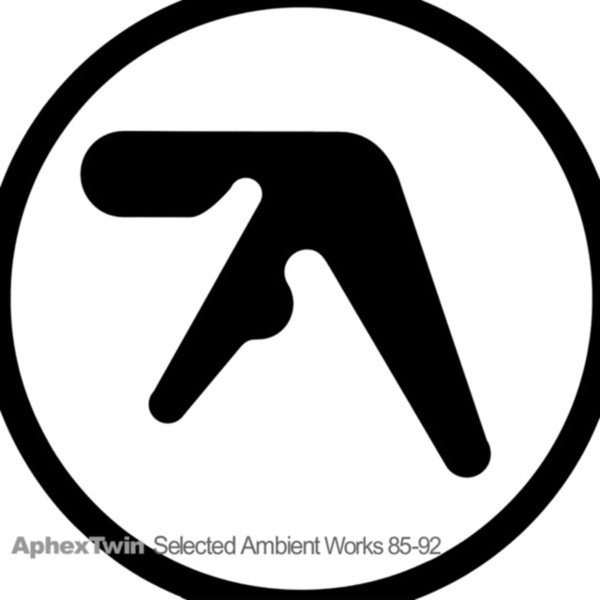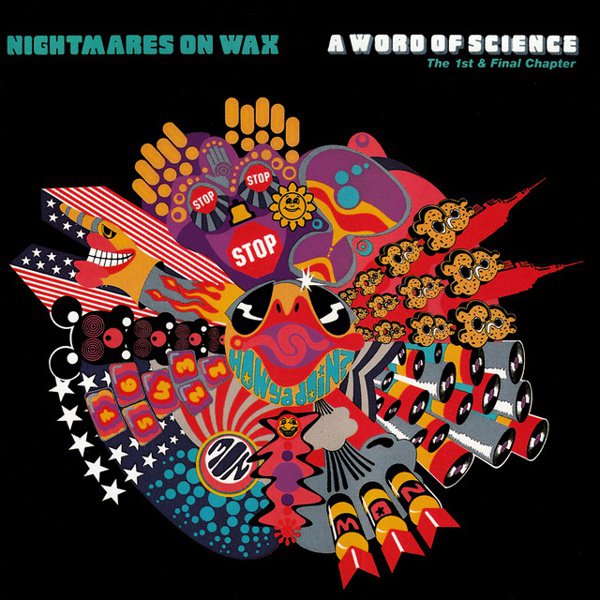Warp came to be in 1989 because two important things happened at the same time: the gear developed and the beats changed. There was a larger scene, across Britain, labeled “acid” or “house” or those two words plus “rave.” It was driven by kids without money who wanted to dance in abandoned spaces and use new machines to make records that didn’t refer to music they already knew. The technology they needed was modest, and the beat patterns were derivations of house music that floated somewhere between 120 and 130 BPM. The trademark sound of the moment was the rubbery and abrasive burp of a Roland TB-303. Some of the biggest changes in style came from the small lines of instruction wired into drum machines and keyboards.
Warp Records began when two friends who worked in a Sheffield record store called FON—Rob Mitchell and Steve Beckett—put out a single produced by their friend, Rob Gordon. That first single was a rudimentary acid house workout called “Track With No Name,” credited to The Forgemasters. Warp slowly released more singles, all of them suitable for clubs and raves. These weren’t complicated records, initially. You could hook up a Roland 808 drum machine to a keyboard or even loop a few small samples on a Casio SK-1 keyboard and be done. Things could get wiggly or loud or strange but they had to keep up a pulse for the dancefloor.
Remember the context—in the late Eighties and early Nineties, the British did lots of important work simply by pushing American boats a little further out. Acid, electro, and Soul II Soul’s records were all extrapolations of trends that only lasted for a few months in America. In England, moments become genres and parties lasted for days. The dancefloor environment was a key frame and even if the 1989 version faded from view quickly, it’s essential to remember that this physical way of interacting with music opened up the world of electronic gear to a million options. In practical terms, the dancefloor was ruled by the house beat and the music in the chill out room was called ambient, for lack of a better word. (Often, it was just music with no beats.) In the early days of Warp, LFO mangled and reimagined house while Nightmares on Wax turned hip-hop into a variant of instrumental mood music.
In 1992, Warp released a compilation called Artificial Intelligence, which kicked off the next phase of productivity. The label’s two main stars, Aphex Twin (as Polygon Window) and Autechre, led the compilation into a style between the physicality of acid and the calm of ambient. That style went on to be called, disastrously, electronica. This music no longer needed you to be in the club, or coming down from the club at 4 AM. The machines started to make their own patterns and, as the software got more powerful, it became almost impossible to characterize the music. Which is, of course, where a term like electronica came in. It made sense at the time to simply indicate what machines were being used, since there was no longer a dominant beat pattern or cohort or lifestyle. God knows Aphex and Autechre and Warp didn’t invent any of this, but for a moment, this label was the best way to keep track of an immensely important development.
The album art design of other electronic labels used lots of Area 51 bioforms and curvy fonts ripped from Alvin Toffler paperbacks. Warp distanced itself from that by working in muted colors and stretching quiet sans serif type across photographs. None of it would have been out of place on an ECM release, nor would the technical skill and engineering quality of most Warp releases. In a 2007 interview with Red Bull Music Academy, Warp cofounder Steve Beckett said that the label signs artists who “have mastered the instruments for whatever form they’re working in, so the instruments and technology don’t get in the way of their personality.” He elaborated that “the personality of Aphex Twin or Boards Of Canada start uniquely coming through the music they’re creating, so people can hear that direct emotional contact with the artist, rather than just hearing what the equipment is.” Kelly Moran, now signed to Warp, told me that “technical proficiency on my instrument is key to my identity as a musician. I would say all of the Warp artists are technically proficient in their own way, even if it doesn’t apply to playing an instrument traditionally.” Additionally, Beckett and cofounder Rob Mitchell encouraged people who had been making twelve-inch singles for the dance community to take a cue from indie rock bands. “With the rock labels we looked up to from the indie side, like Mute and Factory, they had a whole look and really developed the artists, recording albums, sending them out on tour,” Beckett said. “We took that model and applied it to dance music, so LFO were the first people we worked with where we were like, ‘Come on, guys. You’ve got to make an album.’”
Tom Jenkinson, who does business on Warp as Squarepusher, started releasing records in 1995. It wouldn’t be unfair to describe him as a fundamentally indie artist: fully himself, unlikely to have a radio hit, and immensely hard working. In his hands, the hypersonic breaks and jigsaw edits of drum and bass became expressions of fractal possibility rather than triggers for dancing. Turning the form into some variant of jazz wasn’t Jenkinson’s idea alone, but he’s stuck with it longer than almost anyone. His recent album Be Up A Hello recharged the sounds he made twenty-five years ago, and was even made with some of the same gear (including a Commodore computer). About half of the 2003 Squarepusher album Ultravisitor could be ported out onto any number of jazz labels, especially the delicate, almost madrigal instrumental “Andrei,” played on fretless bass and acoustic guitar. That kind of wide range adaptability is fairly representative of the 21st century Warp catalog.
Warp, home of the articulate machines, has actually signed a number of live bands. Battles, one of the best to ever combine the physicality of instrument-playing with the liberating jail of the sequencing grid, is maybe a logical choice. But Warp also has Gravenhurst, who might even be folk, and Squid, who are some version of rock, and Yves Tumor, who is maybe one of the last rock stars.
What feels most relevant about Warp is their old school, 60s major/80s indie sense of loyalty. Think of Atlantic or Blue Note or 70s Columbia, where artists would be signed and go through multiple flop eras and still have a contract. My favorite recent Warp moments are from Aphex Twin (a rollicking live show in Brooklyn) and Autechre (Sign and Plus, a pair of transcendent albums). Maybe that’s just the luck of the draw, but I’d posit that having a label stick with you no matter what is more or less the point of labels, a genre agnostic observation.











